Washington apple growers planted 630,000 new Cosmic Crisp apple trees this spring and will plant an estimated 10 million more trees over the next two years to revolutionize variety offerings of the nation’s largest apple-producing state.
MANSON, Wash. — Chris Anderson is in his 37th year of operating a small apple orchard once owned by his father on the north shore of Lake Chelan.
He’s among more than 50 Washington growers selected in a drawing for this spring’s first planting of the Cosmic Crisp, a new apple variety that industry leaders hope will usher in a new era.







